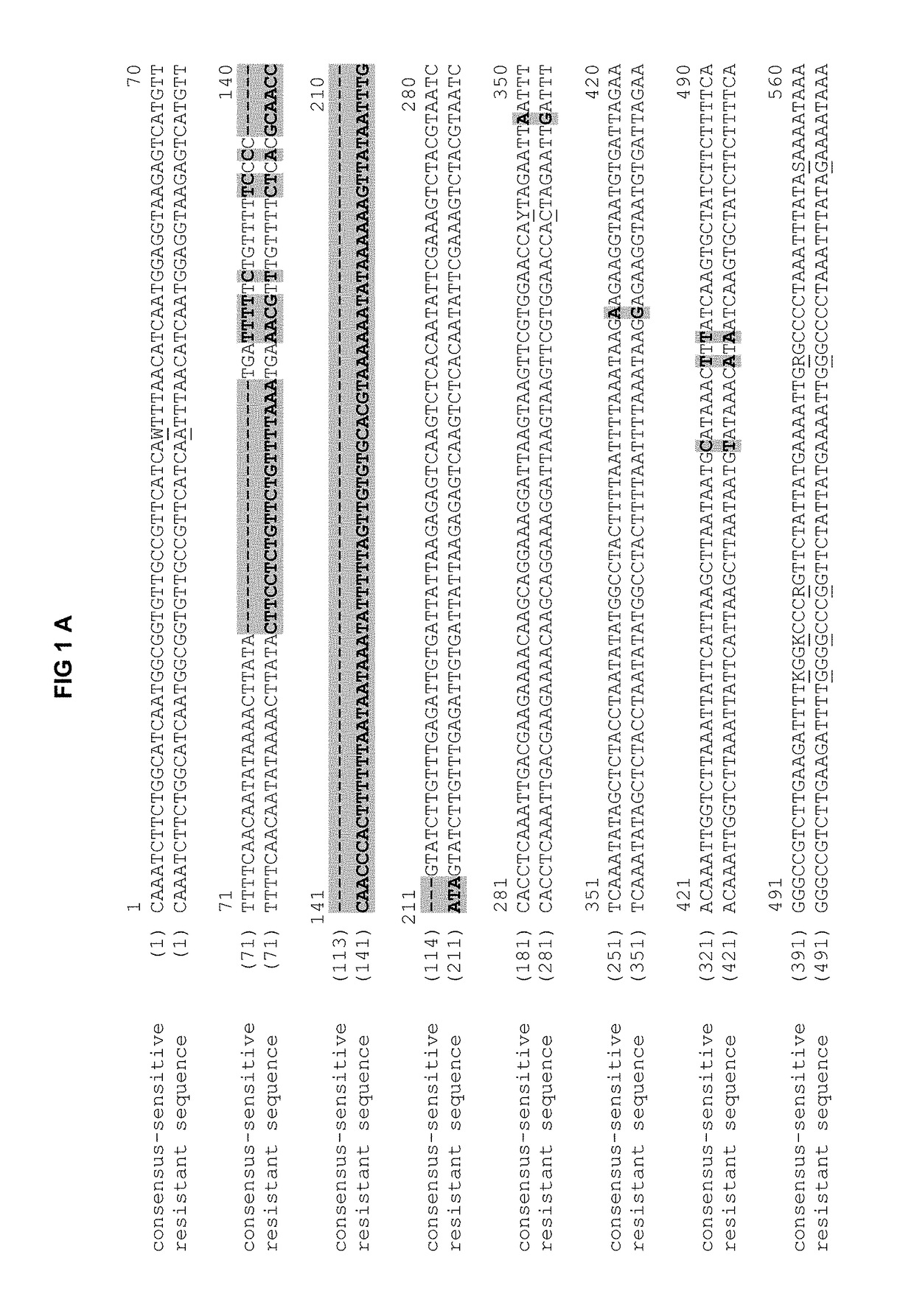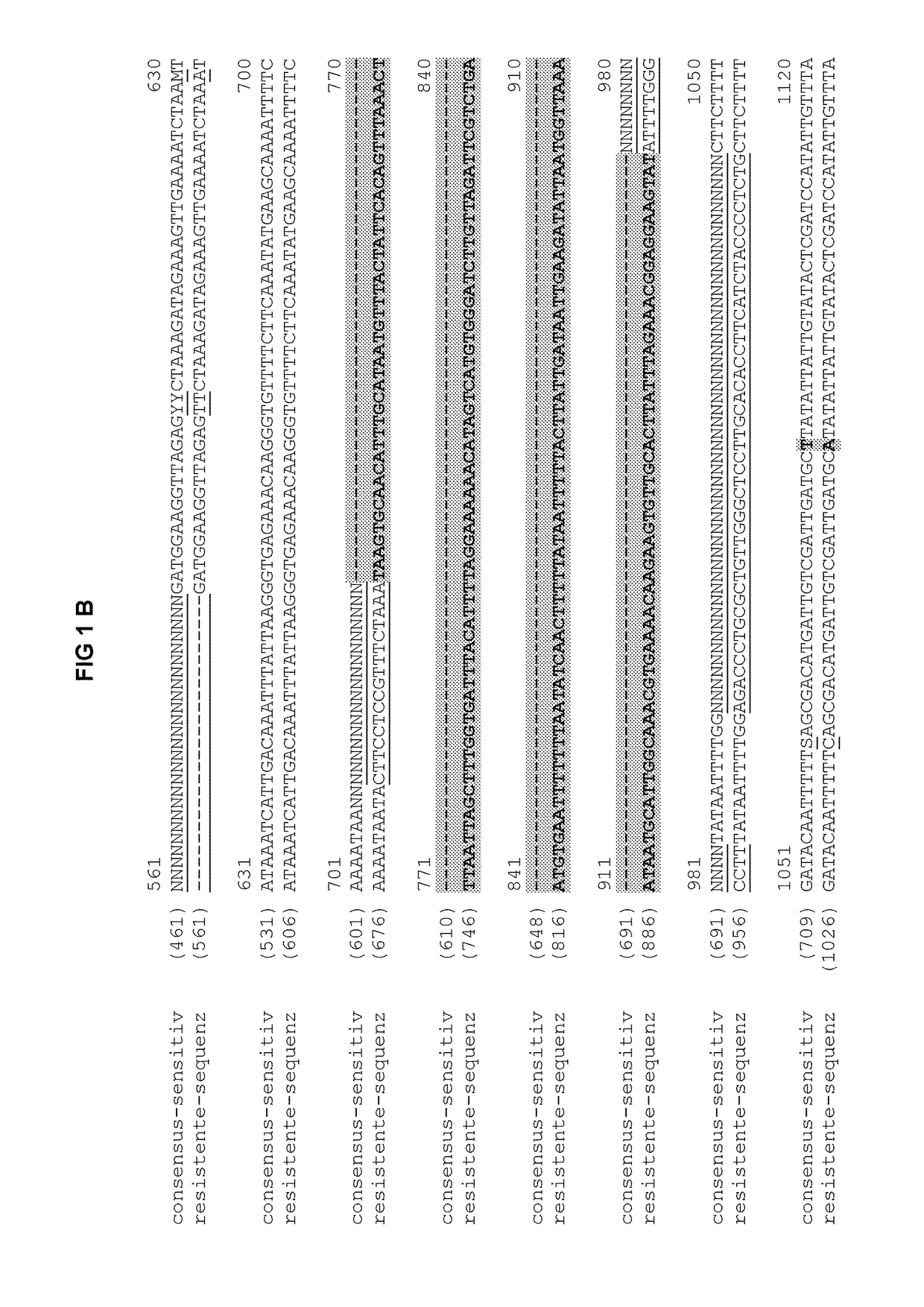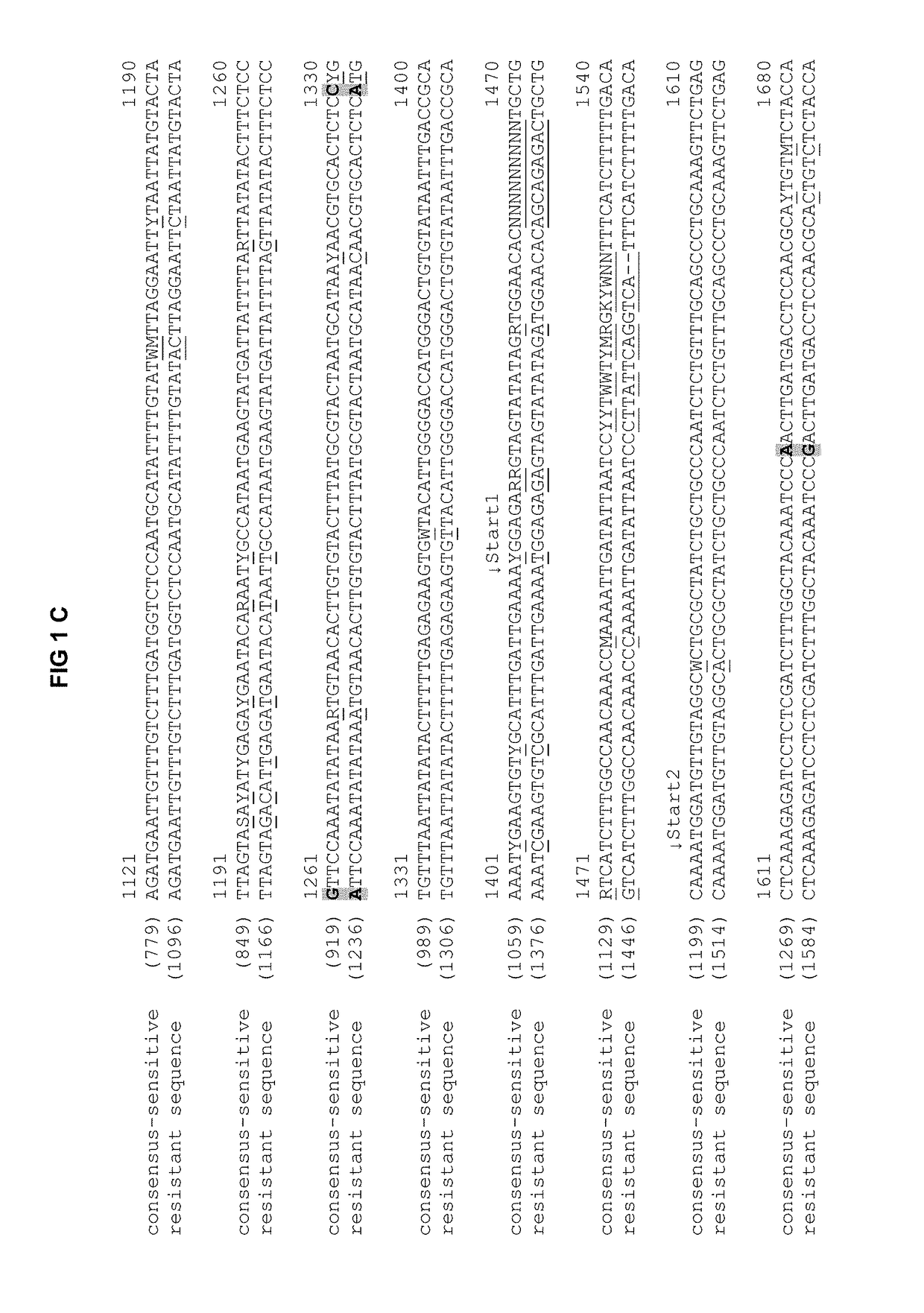Rhizomania-resistant gene
a technology of rhizomania and resistance, applied in the field of rhizomania resistance gene, can solve the problems of insufficient resistance conveyed by rz-1 in heavily infected regions or regions, loss of earnings of 50% and more, and inability to adapt to the environment, etc., to achieve the effect of reducing the cost of cropping
- Summary
- Abstract
- Description
- Claims
- Application Information
AI Technical Summary
Benefits of technology
Problems solved by technology
Method used
Image
Examples
Embodiment Construction
Mapping and Fine-Mapping of the RZ-3 Gene / Genetic Physical Map
[0064]The RZ-3 resistance (also referred to as C48 resistance or C48) was mapped in a number of steps by means of mapping and fine-mapping on chromosome 3 between 57.1 and 57.8 cM (internal reference map), i.e. at a genetic distance between two flanking markers of 0.0714 cM in the genetic map. A total of 8004 plants for the crossing S504 (sensitive genotype)×T74 (resistant genotype) were examined for the mapping. Parallel to the C48 QTL mapping new informative markers were developed in a target-oriented manner following each mapping step and were used for the limitation of the C48 target region.
[0065]The fine-mapping coordinates were additionally confirmed with the analysis of the descendants of the informative recombinants. Informative recombinant BC2S1 or BC2S2 plants were analysed intensively for this purpose, in each case with 90-180 descendants. These descendants were genotyped and phenotyped in parallel on an indivi...
PUM
| Property | Measurement | Unit |
|---|---|---|
| pH | aaaaa | aaaaa |
| pH | aaaaa | aaaaa |
| resistance | aaaaa | aaaaa |
Abstract
Description
Claims
Application Information
 Login to View More
Login to View More - R&D
- Intellectual Property
- Life Sciences
- Materials
- Tech Scout
- Unparalleled Data Quality
- Higher Quality Content
- 60% Fewer Hallucinations
Browse by: Latest US Patents, China's latest patents, Technical Efficacy Thesaurus, Application Domain, Technology Topic, Popular Technical Reports.
© 2025 PatSnap. All rights reserved.Legal|Privacy policy|Modern Slavery Act Transparency Statement|Sitemap|About US| Contact US: help@patsnap.com



